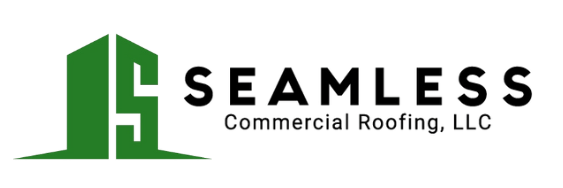Importance of Commercial Roof Inspections
When it comes to managing commercial properties, conducting regular commercial roof inspections is a critical aspect of facility maintenance. As a business owner, property manager, or facility maintenance professional, prioritizing the safety, integrity, and longevity of your commercial building is paramount. Let’s explore the significance of ensuring safety and compliance as well as the financial benefits that stem from scheduling routine roof inspections.
Ensuring Safety and Compliance
Commercial roof inspections play a vital role in safeguarding your investment and ensuring the safety of occupants within the building. While most jurisdictions may not mandate roof inspections for obtaining a certificate of occupancy (CO), these inspections are essential to verify that the building is secure, dry, and structurally sound, allowing for the completion of other building elements. By proactively monitoring the condition of your roof, you can detect potential issues early on, preventing costly damages and mitigating safety hazards.
Partnering with a reputable roofing contractor to establish a comprehensive maintenance plan is key to complying with safety standards and industry regulations. Regular inspections not only help in identifying existing problems but also serve as a preventive measure against future issues, ultimately promoting a safe and compliant working environment for your employees and visitors.
Financial Benefits of Regular Inspections
In addition to ensuring safety and compliance, regular commercial roof inspections offer significant financial advantages for property owners and managers. Detecting and addressing roofing issues promptly can save you from costly repairs and potential downtime due to unexpected damages. Commercial roof inspections seek to detect problems before they escalate, thereby reducing overall maintenance costs and extending the lifespan of the roof (Procore).
For contractors and manufacturers, commercial roof inspections also play a crucial role in determining the confidence in offering warranties and influencing potential return business opportunities. By demonstrating a commitment to proactive maintenance and quality assurance through regular inspections, you can enhance the value of your commercial property and attract tenants or clients seeking well-maintained facilities.
By understanding the importance of regular roof inspections for safety, compliance, and financial stability, you can take proactive steps to protect your commercial property investment and ensure the long-term durability of your roofing system. Make sure to incorporate biannual roof audits as part of your maintenance strategy to stay ahead of potential roofing issues and maximize the operational efficiency of your building.
Commercial Roof Inspection Process
To maintain the integrity and longevity of your commercial property, it is essential to follow a systematic commercial roof inspection process. This ensures that your roof remains in optimal condition, preventing costly repairs and potential safety hazards. The inspection process consists of three key stages: pre-inspection preparation, visual inspection for damage, and detailed examination using specialized tools.
Pre-Inspection Preparation
Before initiating the inspection, it is crucial to prepare adequately to ensure a thorough assessment of your commercial roof. Safety should be the top priority during this phase. Make sure to wear appropriate safety gear, including non-slip shoes, gloves, a safety harness, and knee pads, to protect yourself while working on the roof.
Furthermore, ensure you have a sturdy ladder with rubber feet or claws to prevent slipping. The ladder should extend about three feet above the roof line and have a stable base for safe access to the roof during the inspection (Roof Time). Having a flashlight handy is also beneficial for inspecting areas with poor visibility, such as the attic, and identifying cracks or leaks.
Visual Inspection for Damage
Once you are safely positioned on the roof, conduct a visual inspection to identify any visible signs of damage. Look for issues such as cracks, punctures, or standing water, as these can indicate underlying problems. Visual inspections can uncover early warning signs of roof damage that may require immediate attention.
Throughout the visual inspection, document your observations using a roof inspection checklist. This checklist will help you systematically assess the condition of the roof and note any areas of concern. In addition to a checklist, carry a tool for note-taking, a camera or smartphone for visual documentation, and chalk for marking damaged areas on the roof (Roof Time).
Detailed Examination with Specialized Tools
After completing the visual inspection, proceed to a detailed examination of the roof using specialized tools. This phase may involve the use of equipment such as moisture meters, infrared cameras, or drones to detect hidden issues not visible to the naked eye. These tools can provide valuable insights into the overall health of your commercial roof and help identify potential areas of concern.
Additionally, an interior inspection is recommended to check for water damage and structural issues that may affect the roof’s performance. Documenting your findings in a detailed report is essential for informed decision-making and prioritizing necessary repairs or maintenance tasks.
By following a comprehensive commercial roof inspection process, you can proactively address maintenance needs, extend the lifespan of your roof, and ensure a safe and secure environment for your commercial property. Conducting regular inspections and promptly addressing any identified issues will help you avoid costly repairs and potential disruptions to your business operations.

